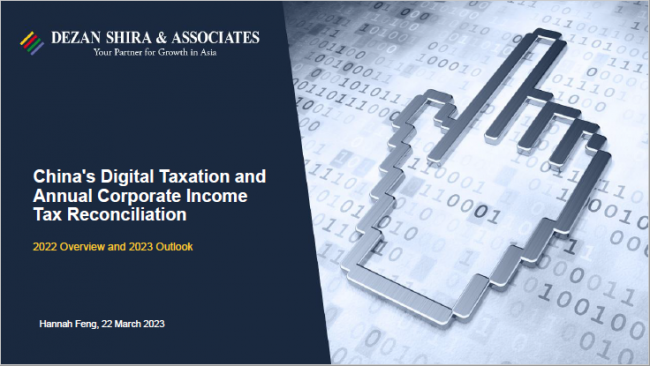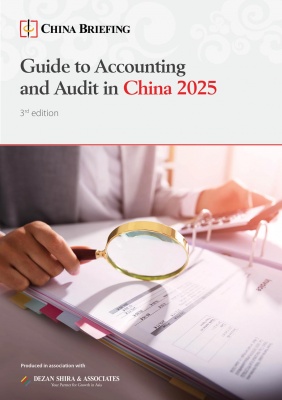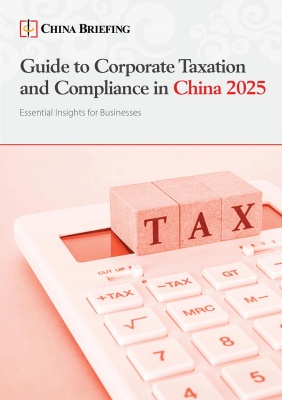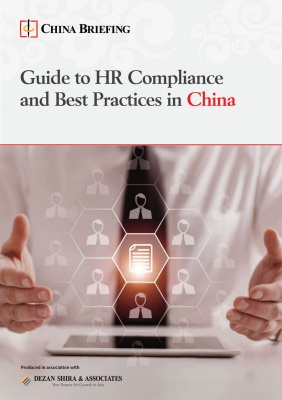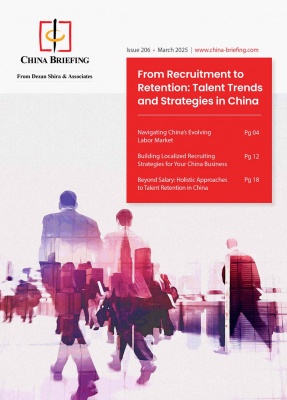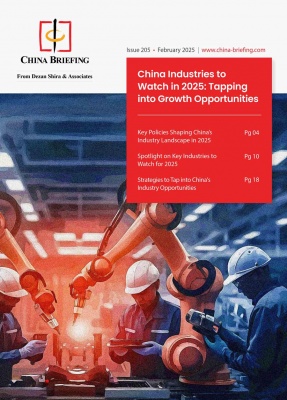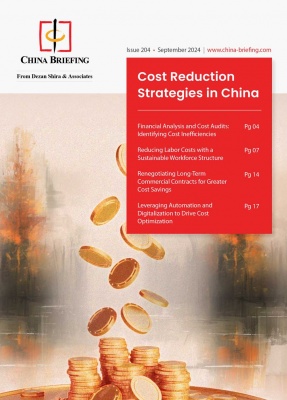Impact of US-China Tariffs on Transfer Pricing – Considerations for MNCs
On April 2, 2025, Trump announced sweeping reciprocal tariffs on around 90 trade partners and a 10 percent minimum baseline tariff on global imports, sparking turmoil in global markets. While the reciprocal tariffs on the majority of most partner’s have been given a 90-day pause, the 10 percent universal base tariff and the tariff on China remain in place. In addition to the immediate serious implications for the global economy, the tariff escalation also has important consequences for transfer pricing, particularly for multinational corporations involved in intercompany transactions. We look at how tariffs impact transfer pricing and discuss strategies companies can adopt to mitigate the risks.
At the time of writing, tariffs on imports from China to the US are at 145 percent, while imports from the US to China face an 125 percent tariff. US imports from all other jurisdictions are subject to a 10 percent baseline minimum tariff. Certain products, including smartphones, computers, and semiconductors, are exempt from the US import tariffs.
In response to the rising tariffs, companies may look to adjust their transfer prices or prepare transfer pricing (TP) risk mitigation plans to offset the increased costs of imports. However, this strategy brings potential tax implications for the importing companies, as well as the risk of noncompliance with the arm’s length principle. To ensure that the tax benefits of reducing the transfer price are not outweighed by the risks of violating transfer pricing regulations, multinational corporations (MNCs) must conduct thorough analyses and maintain robust documentation to withstand scrutiny from both customs and tax authorities in both jurisdictions.
In this article, we look at the possible implications of the rising tariffs on transfer pricing and discuss steps MNCs can take to overcome these complications.
Impact of tariffs on transfer pricing between Chinese and American subsidiaries
Under both US and Chinese import regulations, tariffs are usually imposed on the value of the transaction at the time of import. This means that the 145 percent tariff currently imposed on Chinese goods entering the US and the 125 percent tariff on US goods entering China will be applied to the transfer price agreed upon between the affiliated entities. In both cases, customs authorities may make adjustments if they deem the declared value to be inaccurate.
The escalation of tariffs between China and the US may incentivize MNCs to adjust their transfer pricing policies to offset the import tariff burden. This is primarily achieved by reducing the prices charged by the exporting subsidiaries for goods and services sold to affiliated importing entities. However, while this strategy can mitigate tariff-related costs, it has the secondary effect of increasing the profit margin of the importing entity, leading to higher income tax exposure in that entity’s jurisdiction. As the US currently imposes a lower corporate income tax rate than China (21 percent flat rate on resident companies to China’s 25 percent flat rate), this will mostly be a concern for arrangements that increase the profits of the Chinese affiliate (however, various preferential tax arrangements in both countries could affect this dynamic).
Such pricing adjustments often involve a trade-off between reduced customs duties and increased corporate tax liabilities. The overall financial impact depends on a range of factors, including tariff rates, profit margins, applicable income tax rates, and the structure of the MNC’s supply chain. In practice, companies may weigh these competing outcomes to assess the net economic effect of modifying intercompany pricing in response to higher tariffs.
Compliance with arm’s length principle
Both China and the US adopt the arm’s length principle to assess the legitimacy and fairness of intercompany transfer prices. Mitigating TP risks created by the increased cost of import tariffs, therefore, requires careful navigation to ensure compliance with transfer pricing regulations. This means taking care when transferring tariff costs, making necessary changes to the operational transaction models, being flexible in the face of changes in customs valuation and transfer pricing methods, and making necessary allocations of the increased tariff costs.
Companies must be cautious not to overstep regulatory boundaries, as significant deviations from market-based benchmarks or historical pricing norms can trigger scrutiny from tax authorities. Any adjustments to intercompany pricing should be supported by robust documentation and a clear economic rationale, especially given the dual compliance challenges posed by both transfer pricing and customs valuation rules.
Impact on comparability analysis
The introduction of tariffs may distort profit margins, making it difficult to rely on historical comparables due to fluctuations in their financial statements, as the tariffs impact different competitor companies in varying ways. For instance, entities subject to tariffs will experience increased costs, which in turn can reduce their operating margins.
In contrast, companies that are not exposed to similar tariff burdens may show significantly higher profitability, resulting in an apparent discrepancy between the tested party and the external comparables. Therefore, there may be fewer comparable companies available on databases than before. This can lead to challenges in demonstrating that the intercompany pricing is consistent with arm’s length principles.
Implications for TP results
The tariffs may also impact TP results by altering a company’s profitability. For instance, as tariffs increase the costs of goods sold (COGS) for the importing affiliate, it can reduce its operating profit unless transfer prices are adjusted or the costs are passed on to the consumer (where applicable). This means the importer may report lower margins, which could cause tax authorities to suspect that the company is seeking to shift profits by undervaluing its products.
The tariffs may also skew overall TP results, leading to misalignment between reported profit and actual economic activity. This could further expose the company to scrutiny from tax authorities, as they may question whether the low profit margins are due to non-arm’s length pricing or inappropriate allocation of costs, potentially triggering audits, requests for additional documentation, and adjustments to align the company’s transfer pricing with market-based benchmarks.
Tariff risk allocation
When tariffs are introduced, companies must evaluate how the burden of the tariff is allocated between entities, particularly whether the importer or the exporter will bear the cost. This decision has significant transfer pricing implications, as a company choosing to push the tariff burden onto the exporter by reducing the transfer price could raise questions about the substance of the arrangement.
If the tariff risk is allocated to the exporter, but it is the importer that controls all pricing and sourcing decisions, say, the tax authorities could seek to recharacterize the arrangement. This might result in the reallocation of profits or other adjustments to ensure that the functional capacity (decision-making, assets, personnel, and so on) aligns with a party that is responsible for bearing the risks related to intercompany transactions and that profits are allocated according to the economic substance of the transaction.
Discrepancies between customs and tax authorities
Discrepancies between the priorities and approaches of tax and customs authorities when it comes to intercompany transactions can also cause headaches for multinationals seeking to reduce the impact of tariffs. As stated by analysts at Bloomberg Tax, “changes in tariffs can make transfer pricing and customs valuation compliance much more difficult and cause procedural issues with Customs and Border Patrol (“CBP”) and between the IRS and other tax authorities”.
Tax authorities focus on ensuring that TP aligns with the arm’s length principle, which could lead to adjustments to transfer prices to reflect the true economic functions, risks, and assets of the entities involved (factors that customs do not consider). Customs authorities, on the other hand, prioritize correctly valuing goods to levy duties, usually relying on the transaction price at the time of import.
This could create complexities for the importer, as adjustments made to transfer prices in order to comply with tax regulations will require corresponding updates to customs declarations. However, customs authorities may not accept these new valuations, as they often focus strictly on the declared transaction price and have different valuation methods. This can result in double adjustments – one for tax purposes and another for customs duties – leading to potential penalties or delays if the adjustments are not properly documented or justified.
How can MNCs address the TP complications created by the tariffs?
To overcome the challenges presented by tariffs on TP, MNCs must should have both a short-term strategy and a medium- to long-term strategy.
In the short-term, MNCs should carefully consider tariff risks when determining transfer prices. These prices must reflect the true economic substance of the transaction, including the real functions and decision-making processes of the entities involved. This means that the company must assess not only the tariffs themselves but also the broader operational functions and responsibilities of the subsidiaries affected by the tariffs. For example, if the importer controls key decisions such as pricing, sourcing, or marketing, it is more appropriate for the importing entity to bear the tariff costs, ensuring that the risk allocation aligns with the actual functions and decision-making authority.
Moreover, MNCs must ensure that any adjustments to transfer prices comply with both transfer pricing and customs regulations. This requires robust documentation to justify pricing decisions, particularly in the face of scrutiny from both tax and customs authorities. MNCs should be prepared to demonstrate that their pricing is consistent with the arm’s length principle, supported by clear economic rationale and documented analyses.
To overcome difficulties in comparability analysis and TP results due to rising tariffs, MNCs can focus on adjusting their analysis to reflect the impact of tariffs on profit margins. MNCs must also re-align the intercompany relationships and agreements and carry out necessary negotiations with both suppliers and customers. Moreover, to protect pricing power and avoid scrutiny from tax authorities over low profit margins, companies need robust documentation and a clear economic rationale for any pricing changes.
In the medium and long-term, MNCs should re-examine their global strategic structure and transaction models. This may include re-positioning the functional risks of various entities within the group, re-establishing new strategic partners, and re-planning transfer pricing policies to reduce the tax burden brought about by the trade war and the potential risks of customs and transfer pricing issues.
About Us
China Briefing is one of five regional Asia Briefing publications, supported by Dezan Shira & Associates. For a complimentary subscription to China Briefing’s content products, please click here.
Dezan Shira & Associates assists foreign investors into China and has done so since 1992 through offices in Beijing, Tianjin, Dalian, Qingdao, Shanghai, Hangzhou, Ningbo, Suzhou, Guangzhou, Haikou, Zhongshan, Shenzhen, and Hong Kong. We also have offices in Vietnam, Indonesia, Singapore, United States, Germany, Italy, India, and Dubai (UAE) and partner firms assisting foreign investors in The Philippines, Malaysia, Thailand, Bangladesh, and Australia. For assistance in China, please contact the firm at china@dezshira.com or visit our website at www.dezshira.com.
- Previous Article Selecting Compliant Providers: Understanding China’s 2025 Tax Service Regulations
- Next Article








